Featured
“Skoda Elroq Unveiling on October 1 | Giga Gears”
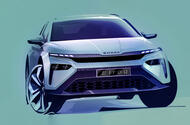 New electric crossover will be first with Modern Solid design language; brings more than 300 miles of range
New electric crossover will be first with Modern Solid design language; brings more than 300 miles of range
The new Skoda Elroq will be unveiled on 1 October, the brand has announced.
It will be the first model to embody the its new Modern Solid design language, with design sketches revealing it bears the 'Tech-Deck' Face and fresh logo (with 'Skoda' lettering replacing the old emblem).
Based on the Volkswagen Group's MEB platform, the Elroq will be Skoda’s third EV to reach showrooms, following the Enyaq and Enyaq Coupe, following the Skoda Enyaq crossover.
It will sit below the Enyaq and the upcoming budget-friendly Epiq city car in the Skoda line-up, facing rivals such as the Volvo EX30 and MG 4 EV.
It's expected to be priced between £30,000 and £35,000.
The Elroq will use similar batteries to many of its Volkswagen Group siblings. A 82kWh pack (which gives the Enyaq a range of 348 miles) is the most likely to power it at launch and a more budget-friendly 58kWh pack should come next year.

Inside, the Elroq gets a 13in infotainment touchscreen combined with an array of physical buttons that operate climate functions. Materials will be sustainably sourced and made from recycled plastic bottles and clothes.
“Volkswagen’s Free Ketchup Offer: Did You Miss Out?”

Volkswagen is more than just a car company: It’s also a food maker, famously manufacturing currywurst in-house to feed its workers. Less famously, Volkswagen actually also makes its own ketchup with which to top that currywurst, and now it’s bringing the condiment to the United States for free — except you almost…

Florida Firm Transforms Land Rover Defender into 518bhp 6×6
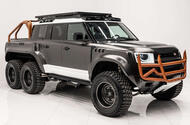
World Ender is powered by JLR's supercharged 5.0-litre V8Conversion costing £280,000 includes special air suspension, grafted-on pick-up bed and ‘cow killer’ bullbars
Florida-based tuner Apocalypse has unveiled a dramatic six-wheel conversion of the Land Rover Defender.
Aptly named the World Ender, it is effectively a Defender 110 with a pick-up bed grafted onto the boot, adding a second rear axle. Other design tweaks include the fitment of front wheel-arch extensions, a roof rack and what the firm calls “cow killer” bullbars.
Underneath, a skidplate helps to protect the front axle from debris in the road, such as rocks or shrubbery.
The vehicle also gets 20in steel wheels and huge all-terrain tyres. Such is the size of the rubber that Apocalypse had to develop its own air suspension system in order to make room under the World Ender’s swollen arches. It can be raised or dropped by 203mm, as required.
Under the bonnet is the JLR’s supercharged 5.0-litre V8, sending 518bhp and 461lb ft through all six wheels via a new gearbox, which also has a rear-wheel-drive mode.
Apocalypse’s ambition is “eat the Mercedes G-Wagen 6x6’s lunch”, CEO Joseph Ghattas said.
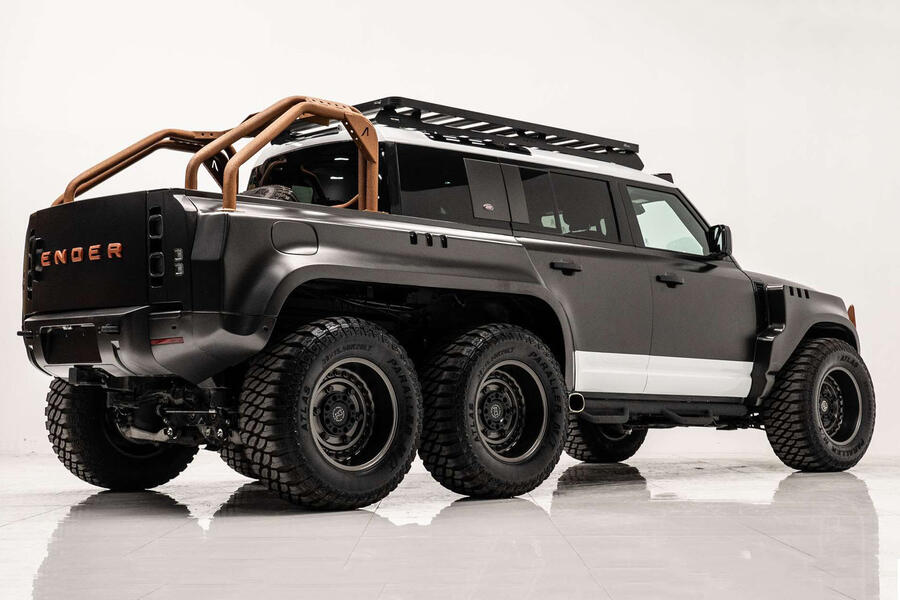
Prices start at $374,999 (£280,000).
The World Ender is the first such conversion of the current Defender, but the classic model was offered as a 6x6 by Land Rover itself. The firm's Special Vehicles arm converted a handful of cars to six-wheel drive during the car’s production run and the vehicles served as fire engines and army truck.
There has been a small industry around such conversions of the classic Defender for decades, with creations including tipper-style pick-ups, camper vans and opulent wagons in the mould of Mercedes-Benz’s AMG G63 6x6.
“Wrencher Revives $880K Rolls-Royce for Camping Adventure | Giga Gears”
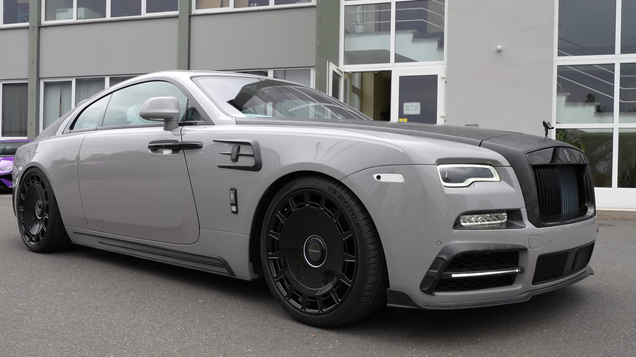
Mansory is a company not known for doing things in half measures. It’s fitted all kinds of outlandish modifications to cars like the Aston Martin DBX and the Lamborghini Urus. Now, after one of its creations was totaled by soccer star Marcus Rashford, a budding mechanic set about restoring the ruined Rolls-Royce…

“Can India Overtake China as a Global EV Leader?” | Giga Gears
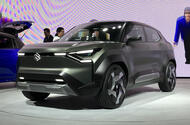
Suzuki eVX electric crossover could become one of India's most important automotive exportsJLR, Suzuki, Tata and possibly Ford are poised to export EVs from the low-cost vehicle centre of the world
Earlier this month, Tata Motors said it would build electric cars with its better-known subsidiary JLR at a plant in Gujarat, India, for export globally.
The resulting models from both brands will arrive next year, based on JLR’s EMA EV platform, which will also underpin smaller Range Rover models, including the electric follow-up to the Evoque.
Meanwhile, Ford announced that it was going to restart production at its previously mothballed Chennai facility. Rather than trying to revive its ill-fated Indian-market adventures, Ford said cars built there would be exported. No details were given, but local media reported that they would most likely be electric cars, with Europe their eventual destination.
Not far from Chennai, on the east coast, Vietnamese car maker Vinfast earlier this year broke ground on a new factory to build EVs.
Perhaps the biggest EV exporter, however, will be Indian market leader Suzuki, which has said that its first EV, to be revealed in January, will be shipped from the country to both Europe and Japan.
Previewed by the eVX concept, the crossover will spearhead Suzuki’s belated push into the EV space in the UK and rest of Europe.
So, with the world’s automotive economies worried about the global grip China has on the EV market, could India step up to become a more benign competitor?
The country certainly has ambitions in that direction and is eyeing up global leadership in the one crucial area needed to gain dominance in the EV world: batteries.
“Within five years, India will be the largest exporter of lithium ion batteries,” Indian minister of road transport and highways Nitin Gadkari boldly promised earlier this month.
The government has set up an incentive scheme to persuade companies build cell manufacturing businesses, and many are taking up the offer.
These include Tata’s new battery company, Agratas, which is also constructing a cell facility in Somerset, England, with the intent to supply JLR.
Manufacturers have used India as an export hub to Europe before, including Ford (the Ecosport and Ka+), Suzuki (Celerio and Baleno) and Jeep (Compass), but for various reasons, the country never developed a reliable vehicle export pipeline to the UK and other European markets. However, its undeniable manufacturing cost advantages could be the winning card in the competition to lower EV prices.
The UK current levies a standard 10% duty on vehicles from India, as it does from China, but could be on the verge of wrapping up long drawn-out negotiations for a free trade deal that might scrap that, along with much higher duties on British cars heading into India.
So how is India shaping up on the EV front? As the world’s most populous country and the third largest vehicle market globally, India has both the clout to reshape the automotive landscape and plenty of incentive to dump the combustion engine, what with its poor urban air quality and reliance on imported oil.
The reality, however, is that India has a long, long way to go to match China. Last year, just 82,105 EVs were sold in India, or around 2% of the market total. This compares with 5.34 million in China, or a quarter of the total.
Around two thirds of all India’s EVs are sold by one company, Tata, which now has an impressive line-up of five EV models.
The electric version of its best-selling Punch small SUV – launched in January - is the first to use its Acti.ev platform, with a 35kWh battery for a claimed range of 227 miles as measured by India’s rudimentary ARAI certification (which is very generous to EVs).
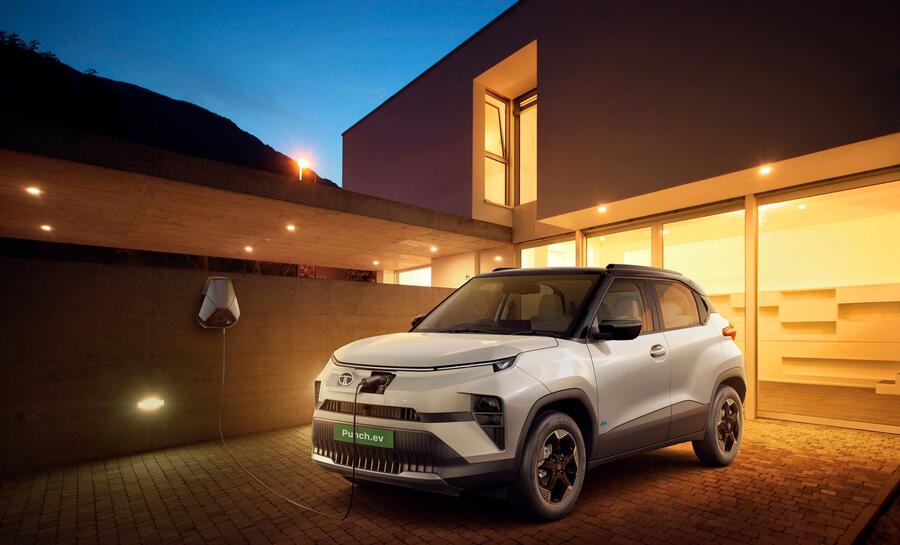
Despite its market leadership, Tata’s EV sales actually fell in the quarter to the end of June after the government ended a purchase incentive.
India’s race to become a global EV player is currently hampered by its reliance on a small pool of players, led by Maruti Suzuki, which dominates the market with small, cheap, low-tech ICE models.
Efficiency in manufacturing, localised parts sourcing and a broad dealer network are the keys to success in the Indian market, none of which encourages much innovation.
Time and time again, global players have tried to bust the monopoly held by Suzuki (around 40% of the market), along with Hyundai, Tata and Mahindra, only for the scale of the task to overwhelm them.
India also lacks the overarching state direction that has been the secret to China’s EV success. The Automotive Mission Plan 2026 published by the government in 2016 mentions EVs only six times. Contrast that with China’s successive five-year plans designed to establish a world-beating EV industry – which, after a few false starts, it arguably has now done.
The Chinese government also directed the build-up of the local battery industry to the point where China now controls much of the supply chain for refined cathode materials, particularly for the cheaper LFP chemistry.
Tensions between the two countries have also led to China to urge EV companies not to invest in India, forcing them to go on much of the journey alone.
India has had far more success in the electrification of its motorbike and scooter market – the world’s largest. Last year, around 10% of India’s 17m two-wheeler sales were electric, led by Indian firm Ola Electric Mobility. In July, sales hit 107,016, up a whopping 96% according to India's Federation of Automobile Dealers Associations (FADA).

With their urban use case and battery-swapping capability, electric two-wheelers are slotting right into Indian life, so much so that the Mitsui & Co Global Strategic Studies Institute reckons they will account for 90% of total sales by 2030, against just 20% for electric cars.
Three-wheel rickshaws are also going electric in India, with 63,667 sold in July, up 18%.
India’s electric car volumes are never going to match those of China, but for the likes of Ford and Suzuki, it could be a useful and cost-effective manufacturing hub for the crucial entry-level cars needed to bridge the current cost gap and ensure they hit emissions targets.
